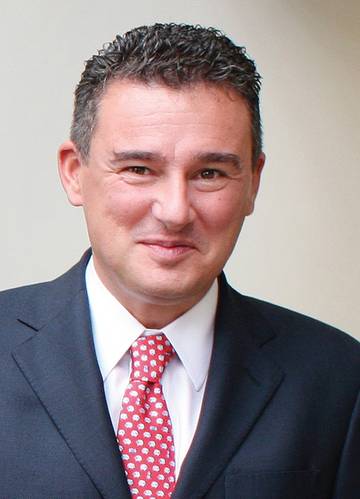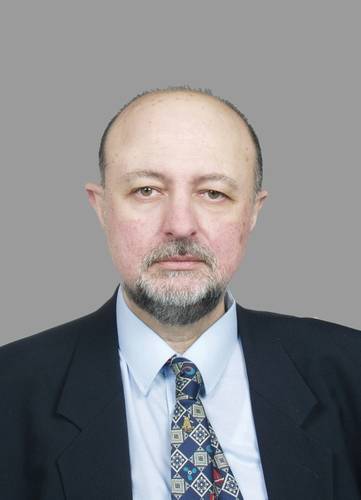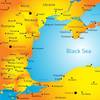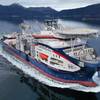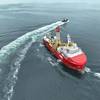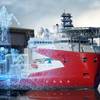Wärtsilä Continues to Drive for Gas
Martime Reporter & Engineering News recently had the opportunity to sit down with Paolo Tonon, Wärtsilä’s new vice president of R&D; and Elias Boletis, Ph.D., Wärtsilä’s Director of Propulsion Programs & Technologies, for insights on key drivers in modern marine propulsion systems design and delivery.
Can you provide a brief personal and professional history?
Tonon I joined Wärtsilä in 1995 as a student in Italy. After that I moved to Wärtsilä’s unit in Vaasa as an engineer in Research & Development, so I’ve been with this company for the last 15 years, in different positions with different engine types. For the last five years I’ve been in Wärtsilä Norway working for solutions for offshore. Since June 1, 2012, I took over leading the R&D for Wärtsilä.
What attracted you to this position, and what are some of your objectives?
Tonon First of all, I have a genuine passion for the products. I like what Wärtsilä aims to achieve, and how Wärtsilä wants to perform in the market as the technology leader. Wärtsilä invests a lot in technology; in 2011 we invested 3.6% of net sales into R&D in the company, which is a pretty high number. The passion for the products, the passion for the technologies, and the fact that it is a very international job which makes the daily job very interesting. Wärtsilä is a life cycle solution provider, so it is not only the diesel engine, which is the core, but you need to see 360 degrees around you.
What do you count as the core strength of Wärtsilä?
Tonon A mix of different competences that we have developed over decades of R&D in the reciprocating engine and propulsion, the system knowledge and integration and automation and electrification, lately going into ship design. This mix of different competences with a strong pillar in knowledge in producing energy, that I think is the core of the company.
From a research and development side, how has the integration of the industry affected your job, your approach to R&D?
Boletis For a long period, my career was on engine development. I have a more generic background, with a PhD in fluid dynamics and have been in product development on reciprocating engines. I found, myself at the propulsion side, and I think there are a lot of synergies between the two. My career was on product development, especially on reciprocating engines. Moving later to propulsion systems, a lot of synergies were found between propulsion and engine product development. There is a need for integrated systems on board of a marine vessel.
Tonon When you look at the messages we are giving here at SMM it is “Your shorter route to profits.” So I think in R&D we have become much closer to the operational and economic challenges of our customers (whether shore-based or sea-based). In this respect we are exposed much more to the entire business model of out clients. So we have to think two or three times when we are developing our products, about we are going to improve the business of our customers. However, with all the above considerations, within R&D we have to develop cutting edges technologies to be fit in our products so to satisfy tomorrow’s needs of our customers.
What are some areas for improvement?
Tonon You can always improve, specifically on the efficiency of the research & development machines. It’s always nice to be faster onto the market with new developments and technologies, or to be stronger in risk management, for example. Wärtsilä is investing a lot in people, to ensure that we receive the right competences. The war for talent is very aggressive. Securing the talent for the company; there are a lot of people out there who are brilliant, and we would like to have them working for Wärtisilä .
When you look at marine propulsion as a whole, what are the top 2 or 3 factors driving your research today?
Tonon Emissions; reliability; Capex and operational costs.
Boletis All of these factors in parallel, and without excluding any of those.
The environment: Put in perspective the changing role of the environmental issue, and how it affects the work that you do today?
Boletis Improvements in efficiency are directly coupled to the operational costs of the operator and the vessel, so we see that things can grow in parallel. So improving the environment does not necessarily mean that we are increasing the costs. On the opposite, now by improving the efficiency of the vessel, you can reduce the environmental and the operational costs.
Tonon We have been launching dual fuel products for a long time, with more than 700 DF engines out there in both land based and shipping operations. The amount of more than 6 million running hours we have accumulated is unique..
What do you count as the lead technical challenge to DF and gas engines versus traditional diesel engines?
Tonon I think the gas engine is a more complicated machine as compared to diesel engines, and we have developed automation and controls for our engines. We need to operate in a very narrow field and to balance between the risk of having misfiring in the combustion chamber and the risk to have knocking. You need to have fast and reliable measurements, fast controls and we have developed that heavily in conjunction with the development of new engines.
Boletis The gas engines have different operational characteristics than diesel engines and this has to be taken into account into the design from the beginning, so we put a lot of attention on controls and system integration. You cannot make it only by having the gas technology, you need to have it integrated into the whole installation; how you support it, with for example, where you locate the gas tanks on the vesse. The design of the machinery room requires high integrating skills.
With the conservative nature of the marine industry what do you count as the challenge to increase the penetration of gas engines into the mainstream?
Tonon The first boundary is related to the development of emission regulations. Will they take place in the whole globe? We have environmental control areas in Northern Europe, Americas, Canada but with other areas there is a question mark as to when they will join in the more strict control of sulfur or NOx. The ship owners and operators, if they are not obliged to comply to certain rules, they will definitely go for operational convenience.
What innovation can our readers expect from Wärtsilä in the coming 12 to 24 months?
Tonon They should expect a set of solutions that meet with their needs, new solutions that are reliable and cost efficient from the initial investment and over the life cycle. We are calling our customers and co-developing with them, together analyzing their business, their needs, and addressing those needs in our products and our solutions. We can’t deliver something that they will make a good use of, if we don’t understand their business model. Their business is to run their business. Let us take the burden to secure all of the technical solutions that they will need.
(As published in the September 2012 edition of Maritime Reporter - www.marinelink.com)






